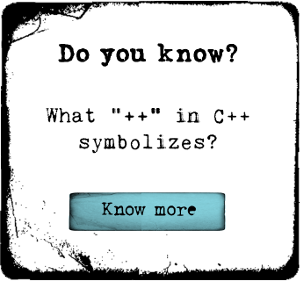How to Make a Video Game

Treehouse
Course Summary
In this course, you'll learn how to make a video game. If you've never programmed before, this is the place to start. You'll create a video game for Windows and Mac OS X where the player must hop a frog character around a swamp to collect flies. Meanwhile, a predatory bird chases the player around. You'll learn about the Unity game engine and the C# programming language, which will allow us to write the code to make the game run. Each line of code will be explained step-by-step, so even if you have no prior experience, you'll be able to learn and follow along. By the end, you'll have a fun video game that you can share with other people.
-
+
Course Description
About this Course In this course, you'll learn how to make a video game. If you've never programmed before, this is the place to start. You'll create a video game for Windows and Mac OS X where the player must hop a frog character around a swamp to collect flies. Meanwhile, a predatory bird chases the player around. You'll learn about the Unity game engine and the C# programming language, which will allow us to write the code to make the game run. Each line of code will be explained step-by-step, so even if you have no prior experience, you'll be able to learn and follow along.By the end, you'll have a fun video game that you can share with other people. What you'll learn
- Game design fundamentals
- Beginner game programming
- C# syntax
- The Unity interface
About the Teacher
Nick is a teacher at Treehouse and an independent game developer. His Twitter handle is @nickrp.
-
+
Course Syllabus
Introduction to Video Games
Many people play games, but not many people think about how they're made. All modern games are built on top of a game engine, which is collection of code and tools to help speed up the process. In addition, a tremendous amount of effort goes into game design, which is the process of deciding how a game should be played. 5 steps- What is a Game? 4:13
- What is a Game Engine? 2:58
- Introduction to Games 3 questions
- Install Unity 7:51
- Install Unity 3 questions
- Extra Credit Using paper cut-outs and a writing utensil, you can play test game concepts before writing any code. Many game designers will create "paper mockups" of games, because it's easy to iterate on an idea quickly.Design a simple game and create a paper mockup. Even if you're creating an action-oriented first-person game, it may be helpful to design levels from a top-down perspective and navigate them with a placeholder (like a coin, for example). These types of exercises can help you visualize the mechanics of your game before doing any intense programming.
The Unity Editor and Scene Setup
The Unity game engine includes an editor interface for manipulating game assets and placing them into 3D spaces called scenes. After importing some premade game assets, you'll learn how to arrange them in a scene and setup the Unity project for coding. 9 stepsPlayer Input and Cameras
Unity uses a programming language called C#. After you've been given an introduction to C#, you'll learn step-by-step how to make the player move around the screen, and how to make the camera follow the player. 13 stepsPickups
Game designers often refer to the items that a player collects during the game as pickups. A pickup could be an item that enhances the abilities of the player character -- like a powerup. Or it could just be an object that the player collects for points. In our game, as the player collects each fly, one point will be added to the player's score. 7 stepsScore, Enemies, and Game State
Unity has a robust user interface system that allows for screen overlays like score counters, menus, loading bars, and more. After you've created a score counter, you'll learn how to add an enemy to the game that chases the player. Finally, you'll tie everything together and manage the game's state. 9 stepsGame Audio
Over the next several videos, you'll learn how to add sound to the game using code and Unity's robust set of audio tools. Sounds can heighten a game's immersion, and can even impact the gameplay. For example, bird calls and bird footsteps from off screen can give the player a hint about where the bird might be located. 7 steps A "build" is a stand-alone version of a game outside of the game engine or editor. When you make a build, Unity takes everything you've done in the Unity editor and turns it into a computer program that other people can run and play. 3 steps





